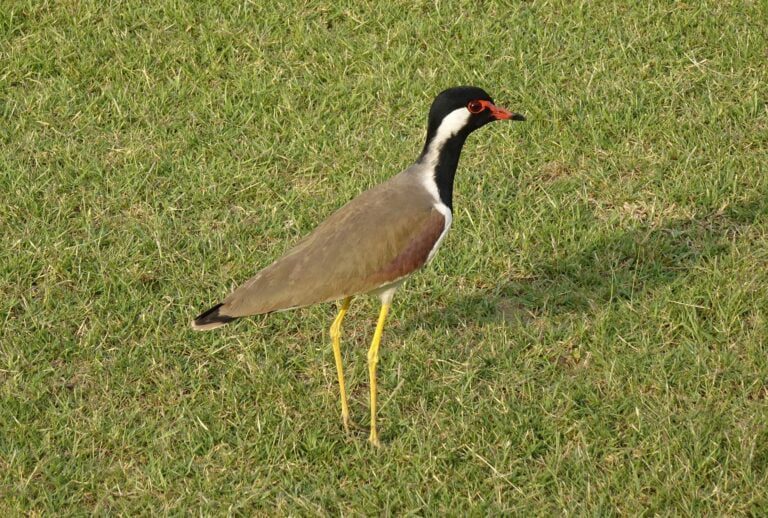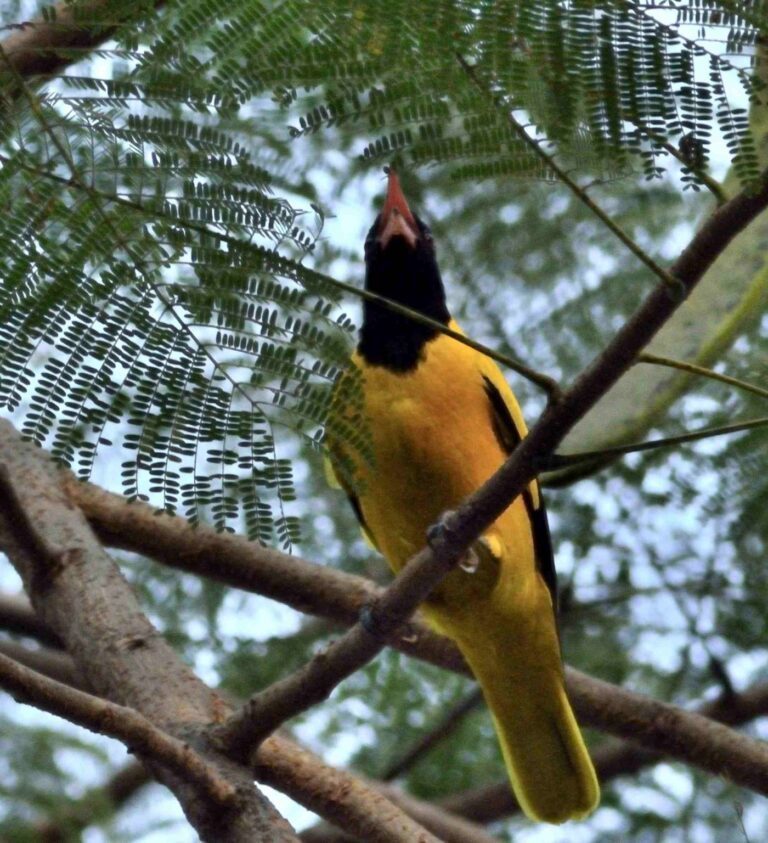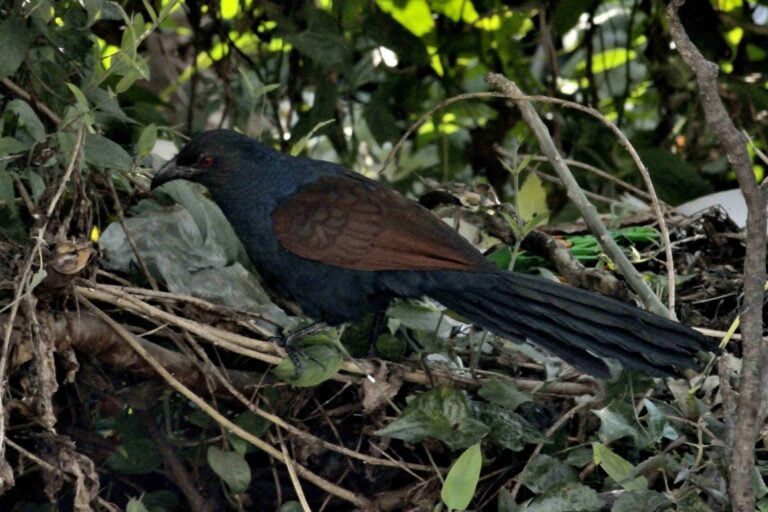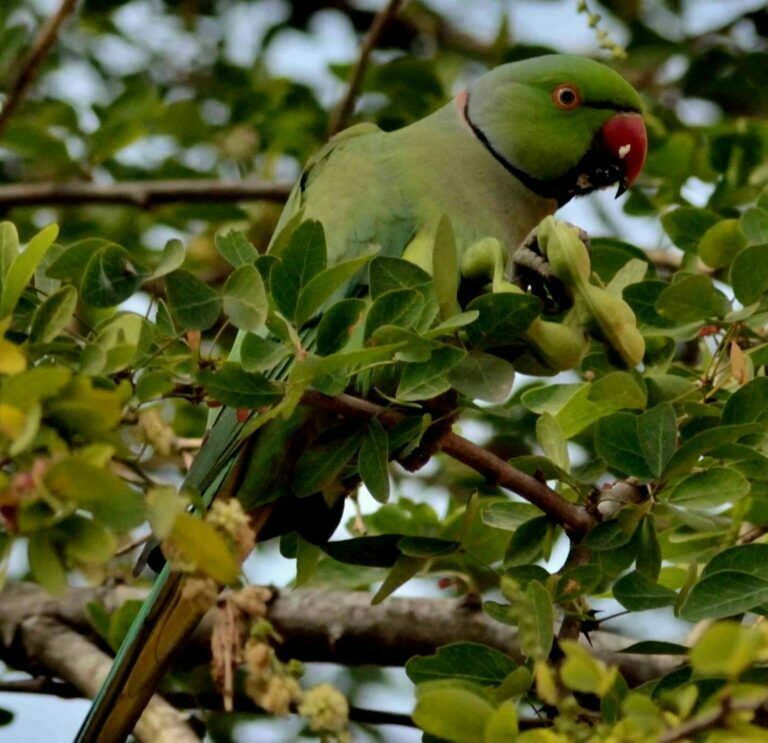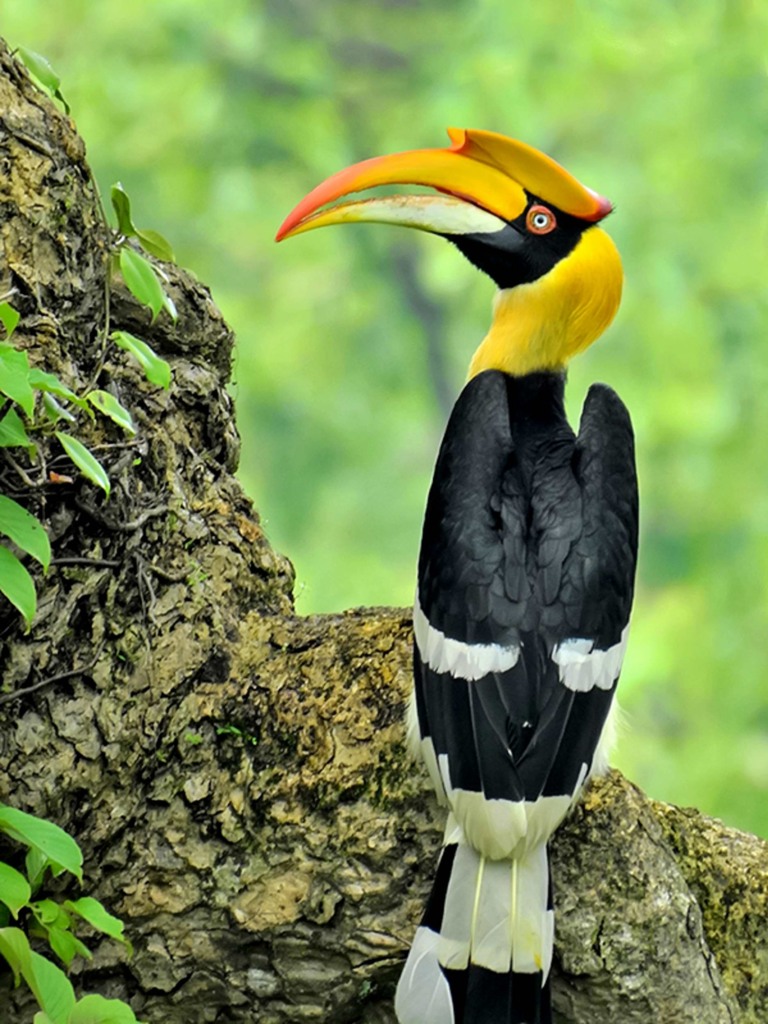The Black-rumped Flameback (Dinopium benghalense), also known as the Lesser Golden-backed Woodpecker, is a striking and medium-sized woodpecker species found in South Asia and widely distributed in the Indian subcontinent. Here’s a detailed overview of its description, habitat, behavior, ecology, and taxonomy:
Black-rumped Flameback Description
1. Size: The Black-rumped Flameback measures about 23 to 26 centimeters (approximately 9 to 10 inches) in length, including its tail.
2. Plumage and Features: Juvenile birds have a more subdued appearance with less distinct red or black markings, which develop as they mature.
3. Head: The adult male Black-rumped Flameback has a striking red crown and nape, which extend from the top of the head to the back of the neck. This red coloring contrasts with its black face, giving it a distinctive appearance. The female lacks the red crown and has a solid black crown.
4. Cheek and Neck: Both males and females have a small white cheek patch bordered by black on the sides of their faces.
5. Upperparts: The upperparts of the Black-rumped Flameback are predominantly golden-yellow, extending from the upper back to the wings. The mantle, back, and scapulars exhibit this golden-yellow coloration.
6. Wings: The wings are mostly black with bold white bars across them. When the bird is in flight, the white wing patches are prominent.
7. Rump and Tail: The rump and the upper side of the tail are entirely black, which contrasts with the golden-yellow upperparts. This black rump is one of the key features that give the bird its name.
8. Underparts: The underparts are creamy white with prominent black streaks running across the breast and belly.
9. Bill: The bill of the Black-rumped Flameback is strong and chisel-shaped, ideal for excavating tree bark to find insects and for creating nest cavities.
10. Eyes: The bird’s eyes are dark and surrounded by bare skin, which varies from pale blue to pinkish-white, depending on the subspecies and geographic region.
Flameback Woodpecker Habitat
This woodpecker species, the Black-rumped Flameback, is commonly found in a wide range of habitats across its distribution. It is prevalent in various forest types, including tropical and subtropical evergreen forests, deciduous forests, and mixed woodlands. Additionally, it can be seen in wooded gardens, parks, and even urban areas with mature trees.
Goldenback Woodpecker Behavior
11. Foraging: The Black-rumped Flameback is an omnivorous bird that primarily feeds on insects and their larvae found in tree bark. It uses its strong bill to hammer and drill into the wood, extracting insects as it probes for food. It will also eat fruits, nectar, and occasionally take small vertebrates.
12. Breeding: Like most woodpeckers, the Black-rumped Flameback is monogamous and nests in tree cavities. Both males and females participate in excavating the nest cavity. The female lays a clutch of eggs, and both parents take turns incubating them and caring for the chicks.
13. Vocalization: The Black-rumped Flameback is relatively vocal, and its calls are characterized by sharp, rapid, and high-pitched notes. Its drumming is also distinctive and can be heard during the breeding season when males drum on resonant surfaces to attract mates and establish territories.
Lesser Flameback Ecology
14. Cavity Creation: The excavation of tree cavities by Black-rumped Flamebacks benefits other bird species that rely on pre-existing holes for nesting, as they often use abandoned cavities for their nests.
15. Seed Dispersal: As these woodpeckers consume fruits, they contribute to seed dispersal within their habitat, supporting forest regeneration.
Lesser Golden-backed Woodpecker Taxonomy
The Black-rumped Flameback belongs to the family Picidae, which includes woodpeckers and related species.
16. It is classified as follows:
- Kingdom: Animalia
- Phylum: Chordata
- Class: Aves
- Order: Piciformes
- Family: Picidae
- Genus: Dinopium
- Species: Dinopium benghalense
There are several subspecies of the Black-rumped Flameback found in different regions of South Asia, and they may exhibit slight variations in plumage and geographic distribution.
Overall, the Black-rumped Flameback is a beautiful and charismatic woodpecker species, known for its vibrant colors and active foraging behavior. Its presence contributes to the health and biodiversity of the ecosystems it inhabits.

